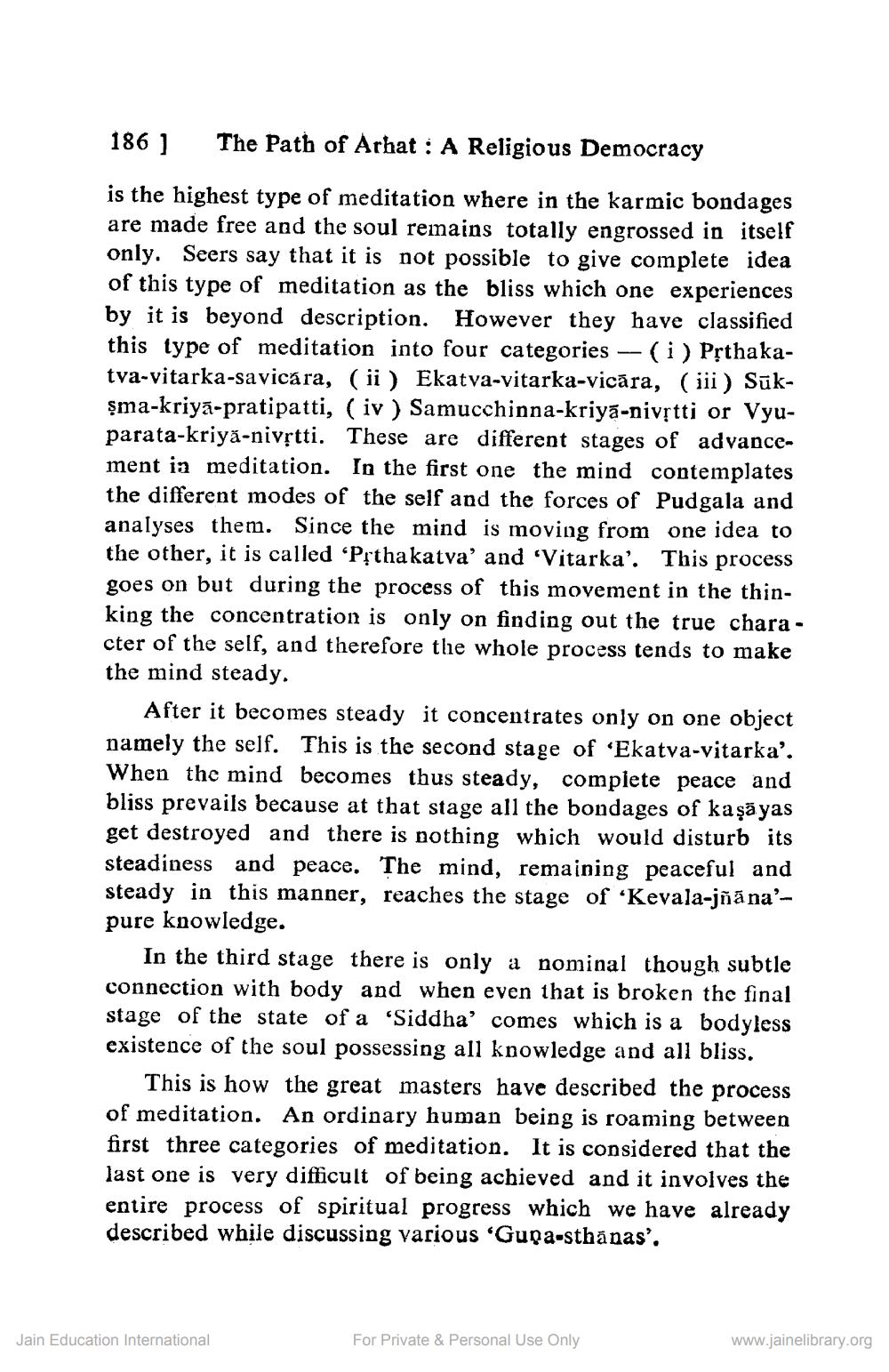________________
186 )
The Path of Arhat : A Religious Democracy
is the highest type of meditation where in the karmic bondages are made free and the soul remains totally engrossed in itself only. Seers say that it is not possible to give complete idea of this type of meditation as the bliss which one experiences by it is beyond description. However they have classified this type of meditation into four categories -- (i) Pșthakatva-vitarka-savicára, (ii) Ekatva-vitarka-vicāra, (iii) Sūkşma-kriya-pratipatti, (iv) Samucchinna-kriya-nivịtti or Vyuparata-kriyă-nivștti. These are different stages of advancement in meditation. In the first one the mind contemplates the different modes of the self and the forces of Pudgala and analyses them. Since the mind is moving from one idea to the other, it is called "Pýtha katva' and 'Vitarka'. This process goes on but during the process of this movement in the thinking the concentration is only on finding out the true character of the self, and therefore the whole process tends to make the mind steady
After it becomes steady it concentrates only on one object namely the self. This is the second stage of 'Ekatva-vitarka'. When the mind becomes thus steady, complete peace and bliss prevails because at that stage all the bondages of kaşā yas get destroyed and there is nothing which would disturb its steadiness and peace. The mind, remaining peaceful and steady in this manner, reaches the stage of 'Kevala-jñā na'pure knowledge.
In the third stage there is only a nominal though subtle connection with body and when even that is broken the final stage of the state of a 'Siddha' comes which is a bodyless existence of the soul possessing all knowledge and all bliss.
This is how the great masters have described the process of meditation. An ordinary human being is roaming between first three categories of meditation. It is considered that the last one is very difficult of being achieved and it involves the entire process of spiritual progress which we have already described while discussing various 'Guga-sthānas'.
For Private & Personal Use Only
Jain Education International
www.jainelibrary.org




